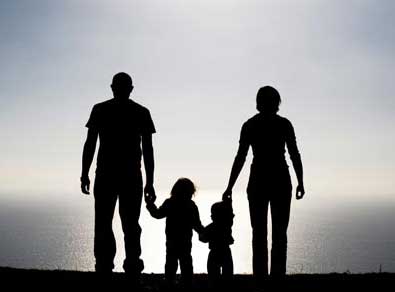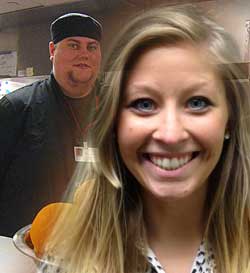Persistence

This Wednesday, Pomegranate joins several other sponsors to support the 2016 Dispatch Student Scholar Athlete Awards at Greater Columbus Convention Center. With our commitment to teens, it was a natural to be a part of this inspiring event which awards scholarships to both boy and girl athletes across several sports categories. The keynote speaker this year is Tim Tebow, of NFL and Heisman fame. Pomegranate employs several athletes, coaches and former athletes who are influential in encouraging and mentoring our residential clients and acute patients.
Many kids play sports. There are a lot of sports movies- like ‘Rudy’. If anything, Rudy was persistent. Here’s one such tale from 3rd grade baseball, California. This stuff can be larger than life for kids. (And parents.) Bottom of the seventh, two-on-base. The score was 3-1. The freckle-faced kid in nerdy clothes came up to bat. Everyone on the bench groaned. Outfielders came in, nodding knowingly. Swing and a miss. It was over quickly. The bell rang; recess done. [Did not even get to the 9th]. Bobby, the Team Captain-a tan kid with wavy blond hair, jeered at the opposition, ‘Losers!’ Opposing Team Captain Tommy, fired back, ‘Don’t bet on it, sucker!’ And following recess was a math quiz. Double insult.
At supper that night, freckle faced kid (‘FFK’) was uncommonly quiet, shoulders slumped. Under watchful parental eyes, and gentle questioning, the story came out. Mom teased out a little more over the tuna casserole and Jell-O salad, before dessert. That weekend, Dad bought a glove, ball and a bat. He evidently knew his stuff, and this was a side to him ‘FFK’ had never seen before. Nightly practice began with the little brother ‘TLB’, and mom in the cheering section, occasionally stepping in to hit. From feeble ground balls they practiced until FFK could easily hit sluggers over the neighbor’s fence into his swimming pool. As Dad drove the blue family Ford wagon past school grounds, FFK rehearsed coming up to bat in his mind; how he would stand, holding the bat until the right pitch connected.
It was a hot day, dusty from Santa Ana winds on the playground, and the teacher had a headache. The team captains picked kids, until only ‘terrible Torrance’, FFK and Thelma with the thick glasses were left. FFK didn’t see much action there in the outfield, but finally came up in rotation. Ironically, bases were loaded in the bottom of the ninth, 3-1. FFK came up to bat and Tommy said glumly, ‘Just try to hit it, ok?’ Bobby waved the outfield in with a sneer, and prepared to pitch. ‘Ball!’ shouted the umpire. FFK stepped back, and then connected with the second pitch. With a loud crack, the ball flew far into the outfield and rolled down near the monkey bars were the younger grades were playing. The dugout went wild. ‘We did it!’ Tommy whooped, running to high five the bench. Bobby had a funny look on his face, resigned. He turned to FFK, punching his glove. ‘I might have to pick you higher up now. See if you can do that again,’ he mumbled. FFK smiled, ‘Thanks. I’ve been working on it.’
‘Persistence’ will not work if there isn’t desire and intent behind it. ‘Persistence’ is also known as ‘stick-to-it-iveness’. Persistence’ won’t work if there isn’t learning involved. ‘Persistence’ doesn’t usually accomplish the goal if you weren’t meant to, or simply not ready to achieve something (yet), or, if it is the wrong goal. ‘Persistence’ is that quality of resilience that sees you through adversity, tough times and not shining’. Persistence sees you through to something called serendipity, which is the moment (timing) it all comes together, at times, unanticipated. Magic occurs, and persistence pays off. You can’t predict when the moment will be, but it makes it all worthwhile. Persistence teaches us the ‘yes you can’, ‘you will’, ‘it’s gonna happen’ and ‘you DID IT!’ Congratulations to ALL the winners of the student scholar athlete awards and their supporters!
Read more about The Dispatch Student Scholar Athlete Program at: http://www.dispatch.com/content/stories/sports/2016/04/17/dispatch-scholar-athlete-program–banquet-back-with-tim-tebow-as-speaker.html
[Photo credit: cShock/Dreamstime 9785607 Basket ball game Player@ sport hall]

 At the NASW continuing education, Science of Social Work: Focus on Transitional Youth conference held Friday in Cleveland, Gabriela Celeste, JD and Policy Director at Schubert Center for Child Studies, Case Western Reserve made a keynote address on emerging adulthood. In a study spanning over 75 years on the ‘Secret to a Fulfilling Life’ there were two key findings which move people from child-hood to adulthood, the ability to form loving relationships and a sense of intimacy with another/others, and finding ways to cope with life’s ups and downs and not push love away. Celeste asked the audience what biggest drawbacks/threats exist for a young person making it successfully to adulthood. The answers were well-informed: lack of engaged parents, lack of adequate education, poverty. ‘One of the biggest threats to young well-being is a sense of isolation,’ she said. ‘This focus on independence is a false notion, it should be interdependence. We need each other,’ she explained. There is a lot of science behind the importance of connectivity.
At the NASW continuing education, Science of Social Work: Focus on Transitional Youth conference held Friday in Cleveland, Gabriela Celeste, JD and Policy Director at Schubert Center for Child Studies, Case Western Reserve made a keynote address on emerging adulthood. In a study spanning over 75 years on the ‘Secret to a Fulfilling Life’ there were two key findings which move people from child-hood to adulthood, the ability to form loving relationships and a sense of intimacy with another/others, and finding ways to cope with life’s ups and downs and not push love away. Celeste asked the audience what biggest drawbacks/threats exist for a young person making it successfully to adulthood. The answers were well-informed: lack of engaged parents, lack of adequate education, poverty. ‘One of the biggest threats to young well-being is a sense of isolation,’ she said. ‘This focus on independence is a false notion, it should be interdependence. We need each other,’ she explained. There is a lot of science behind the importance of connectivity.





 By embedding the Maryhaven program within Pomegranate’s multi-disciplinary treatment approach, it functions alongside Pomegranate’s clinical and medical therapies to offer a more comprehensive treatment for those requiring AOD counseling, or identified with substance use disorder issues. Its important to identify and treat or teach the tools to recover.
By embedding the Maryhaven program within Pomegranate’s multi-disciplinary treatment approach, it functions alongside Pomegranate’s clinical and medical therapies to offer a more comprehensive treatment for those requiring AOD counseling, or identified with substance use disorder issues. Its important to identify and treat or teach the tools to recover.
 At the NASW National Association of Social Work Conference-Ohio Chapter last week, dozens of workshops were offered. Often, in an emergency situation such as occurs at a busy hospital ED, you’re dealing with more than the patient and must consider the entire family. Therapists Marilyn Gale LISW-S and Julie Sheehan LSW, MSW developed their workshop presentation ‘Family Therapy Meets Crisis Intervention’ based upon years of experience through Cincinnati Children’s psych ED and PIRC-psychiatric intake response center. This includes intake calls, the physical ED environment and ED physicians, telemedicine-interview through an I-pad if off site, and having a crisis presence. It involves family therapy from a systems theory perspective.
At the NASW National Association of Social Work Conference-Ohio Chapter last week, dozens of workshops were offered. Often, in an emergency situation such as occurs at a busy hospital ED, you’re dealing with more than the patient and must consider the entire family. Therapists Marilyn Gale LISW-S and Julie Sheehan LSW, MSW developed their workshop presentation ‘Family Therapy Meets Crisis Intervention’ based upon years of experience through Cincinnati Children’s psych ED and PIRC-psychiatric intake response center. This includes intake calls, the physical ED environment and ED physicians, telemedicine-interview through an I-pad if off site, and having a crisis presence. It involves family therapy from a systems theory perspective. As part of the bio-psycho-social inventory, The Joint Commission and CARF require that spiritual care and the spirituality component be addressed. At the NASW National Association of Social Work Ohio 2015 Conference, presenters Mari Alschuler, Phd, LISW-S and Thelma Silver, PhD, LISW-S addressed the role of spirituality in social work practice. ‘It’s a matter of determining where the client is at,’ (in terms of their beliefs and the role of religion and spirituality in their lives). Spirituality is an important component of the 12-step in substance abuse counseling.
As part of the bio-psycho-social inventory, The Joint Commission and CARF require that spiritual care and the spirituality component be addressed. At the NASW National Association of Social Work Ohio 2015 Conference, presenters Mari Alschuler, Phd, LISW-S and Thelma Silver, PhD, LISW-S addressed the role of spirituality in social work practice. ‘It’s a matter of determining where the client is at,’ (in terms of their beliefs and the role of religion and spirituality in their lives). Spirituality is an important component of the 12-step in substance abuse counseling.